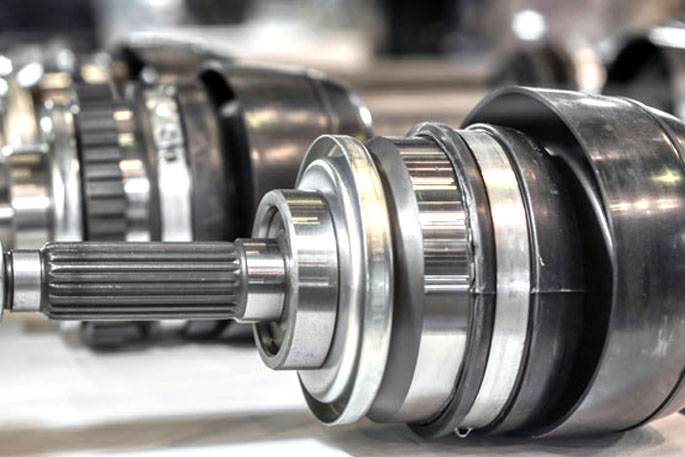CV Joints
CV Joints
Constant Velocity Joints, commonly referred to as CV joints, are integral components positioned at each end of the drive shaft. They serve the critical function of linking the wheels to both the axles and the transmission. The primary purpose of CV joints is to facilitate the controlled transmission of torque to the wheels, ensuring seamless operation.
Detecting signs of a deteriorating CV joint is crucial for maintaining optimal vehicle performance. Here are five indicators that suggest potential issues with your CV axle:
Boot Tear:
Presence of a tear in the protective boot covering the CV joint is a clear visual cue of potential problems. A compromised boot allows contaminants to enter, leading to accelerated wear and diminished joint functionality.
Grease on Wheel Interior:
Discovering grease on the interior of your wheels is a red flag. It indicates a breach in the CV joint's protective boot, allowing lubricating grease to escape. This compromises the joint's lubrication and can lead to increased friction and wear.
Knocking Sound:
The occurrence of a knocking sound, especially during sharp turns or acceleration, may indicate CV joint damage. This sound is often a result of loose or worn-out components within the joint.
Clicking During Turns:
A distinctive clicking noise while turning, particularly at low speeds, is a common symptom of CV joint wear. This sound is typically more pronounced when making tight turns and can signal impending issues.
Vibration While Driving:
Experiencing unusual vibrations while driving, especially during acceleration, can be attributed to imbalances or irregularities in the CV joint. Addressing this promptly is essential to prevent further damage.
Timely identification and resolution of these symptoms are vital to prevent extensive damage to the CV joint and associated components. If you observe any of these signs, it is recommended to consult with a qualified professional for a thorough inspection and necessary repairs.

